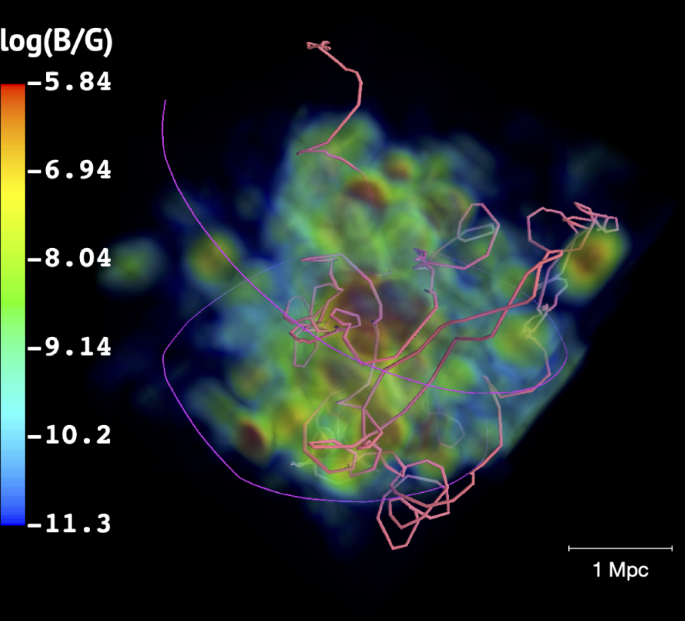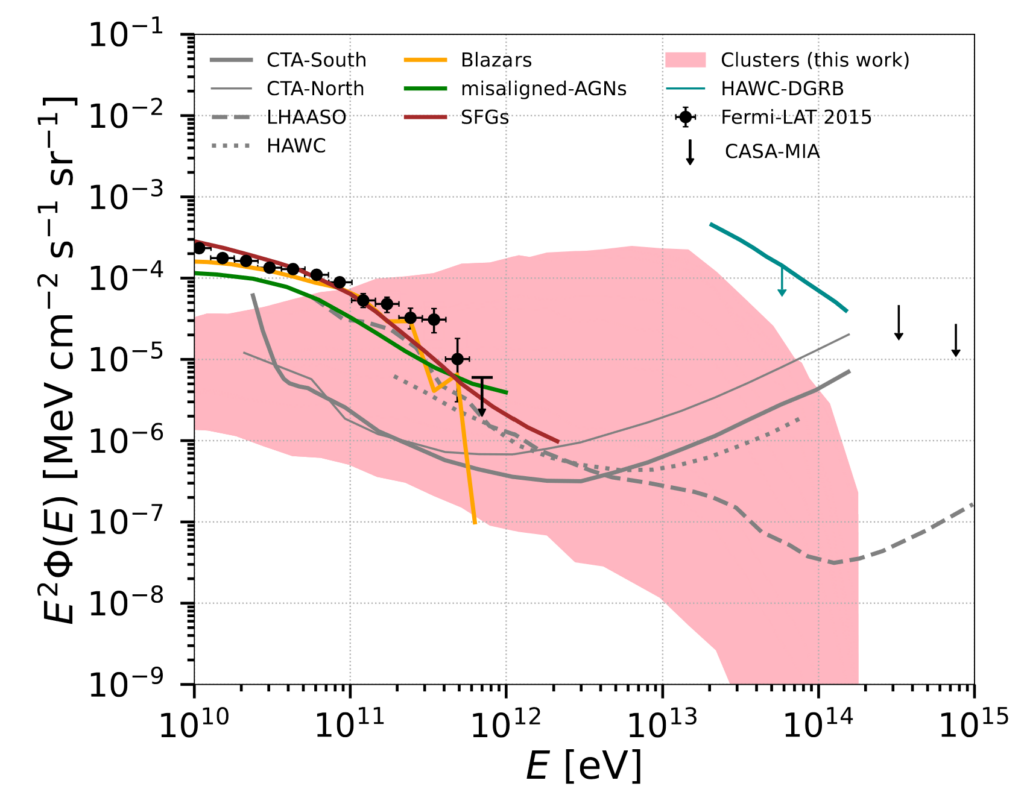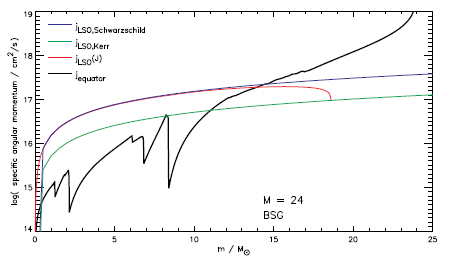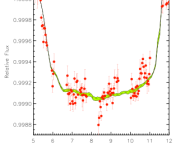Title:The Diffuse Gamma-Ray Flux from Clusters of Galaxies
Authors: Saqib Hussain, Rafael Alves Batista, Elisabete de Gouveia Dal Pino, Klaus Dolag
First Author’s Institution: Institute of Astronomy, Geophysics and Atmospheric Sciences (IAG), University of Sao Paulo (USP), Sao Paulo, Brazil and Gran Sasso Science Institute, L’Aquila, Italy
Status: Published in Nature Communications (open access)
The highest energy particle accelerators
Many people have heard of the Large Hadron Collider, or other terrestrial accelerators, but what about astrophysical particle accelerators? In space, particles can be accelerated to extremely high energies, sometimes up to 10,000 times higher than on Earth! But what are these extremely high energy accelerators, and how can we find them?
The charged particles that have been accelerated are called Ultra-High-Energy Cosmic Rays (UHECRs), which are typically protons or sometimes heavier nuclei. These UHECRs run into each other or photons, producing the highest energy photons in our universe, gamma rays.
We can observe these gamma rays with telescopes on Earth, but we can’t always trace all of the photons we see back to an individual source. Those that can’t be attributed to a single source come from a variety of wavelengths and directions and are called diffuse gamma rays. To investigate the source of these gamma rays, we investigate classes of sources that could produce UHECRs, and thus gamma rays. One such possible source class is starburst galaxies, while another is clusters of galaxies, which is what today’s authors investigate in their paper.
Today’s authors describe a model which investigates UHECRs from clusters of galaxies. These UHECRs are trapped in a cluster’s magnetic field and accelerated until they produce these extremely-high-energy gamma rays. By simulating a possible set of clusters at different distances, the authors can predict how many gamma rays would be seen at Earth. Then the authors can compare the diffuse gamma ray flux and how many gamma rays could be coming from clusters.
What happens to cosmic rays inside clusters of galaxies?
Charged particles inside a magnetic field will experience a force according to the Lorentz force law, which causes these particles to gyrate around and follow along magnetic field lines. Inside a cluster, where the magnetic field is not constant, this can cause some crazy trajectories as cosmic rays get trapped inside of a cluster and accelerated. Sample paths that two cosmic rays could take when traveling through a cluster are shown in Figure 1.
As the cosmic rays travel inside of the cluster, they are accelerated to high energies, and eventually interact, producing photons. In order for these cosmic rays to become UHECRs, they have to be trapped inside the cluster long enough to be accelerated to high enough energy to produce gamma rays. But, once they reach ultra-high-energies and interact, producing photons, those gamma-ray photons can escape and travel to reach us.

A look forward – what could be seen by future gamma-ray telescopes
At this point in the story, these UHECRs have been produced, accelerated, and interacted and have produced gamma-rays within a cluster. But now the authors want to know what the flux of gamma-rays from all clusters together might look like, and if that can explain this diffuse gamma-ray measurement that has been seen.
To calculate this, the authors look at a distribution of clusters of many different masses, and find that the largest number of gamma-rays comes from clusters with a mass between 1013 and 1015 times the mass of the sun. Considering all of these clusters, and how they are distributed in the sky, the authors also take into account their distance from us and their redshift to find the total flux we would expect to see at Earth. However, we also expect to see that some gamma-rays interact with the Extragalactic Background Light (EBL) on their way towards us and become lost (this is called attenuation). These authors’ model takes all of this into account, and the result is shown in Figure 2.

This figure shows the most exciting result of this paper – it is possible that clusters could be responsible for up to the entire diffuse gamma-ray flux we see at high energies!
In the figure, the flux expected from the model could be anywhere in the pink region (this forms a band due to a range of possible values for some quantities in the model). The black points show the measured diffuse gamma-rays, which are within the pink region at energies above 1011 eV, meaning at these energies clusters of galaxies could explain the entire diffuse flux.
The grey curves show the sensitivity of three (the Cherenkov Telescope Array (CTA), LHAASO, and HAWC) ground-based gamma-ray telescopes, which means that any flux above these curves would be visible to these telescopes. LHAASO has recently detected several extremely high energy gamma-ray sources while still under construction, and CTA is an exciting upcoming telescope. This means that these new telescopes could study gamma rays coming from clusters, and, if this model is correct, these telescopes should see a portion of the diffuse gamma-ray flux coming from clusters!
This is especially exciting with these upcoming gamma-ray telescopes – using these, astronomers can probe the source of some of the highest energy particles in the universe. By finding the source of these gamma rays, astronomers can learn more about the nature of their sources, and what processes are happening within them.
Astrobite edited by Lynnie Saade
Featured image credit: Figure 1 of this paper
Edited to update plots to published versions, and to add journal publication information




